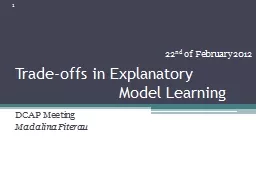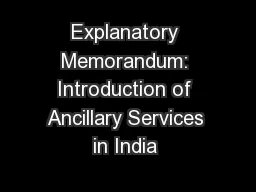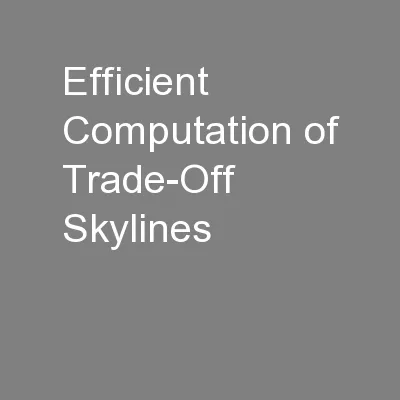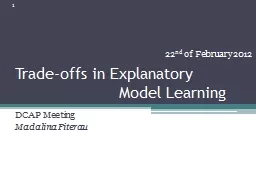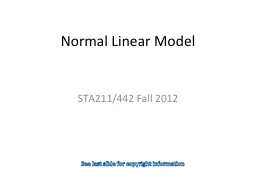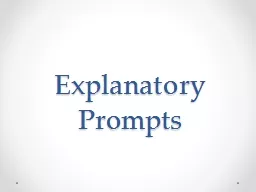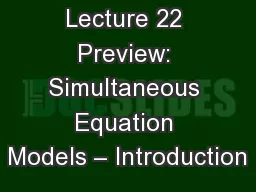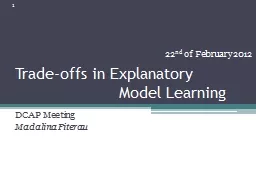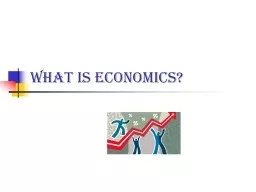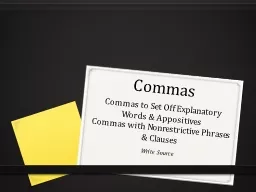PPT-Trade-offs in Explanatory
Author : mitsue-stanley | Published Date : 2018-11-25
Model Learning DCAP Meeting Madalina Fiterau 22 nd of February 2012 1 Outline Motivation need for interpretable models Overview of data analysis tools Model evaluation
Presentation Embed Code
Download Presentation
Download Presentation The PPT/PDF document "Trade-offs in Explanatory" is the property of its rightful owner. Permission is granted to download and print the materials on this website for personal, non-commercial use only, and to display it on your personal computer provided you do not modify the materials and that you retain all copyright notices contained in the materials. By downloading content from our website, you accept the terms of this agreement.
Trade-offs in Explanatory: Transcript
Download Rules Of Document
"Trade-offs in Explanatory"The content belongs to its owner. You may download and print it for personal use, without modification, and keep all copyright notices. By downloading, you agree to these terms.
Related Documents

